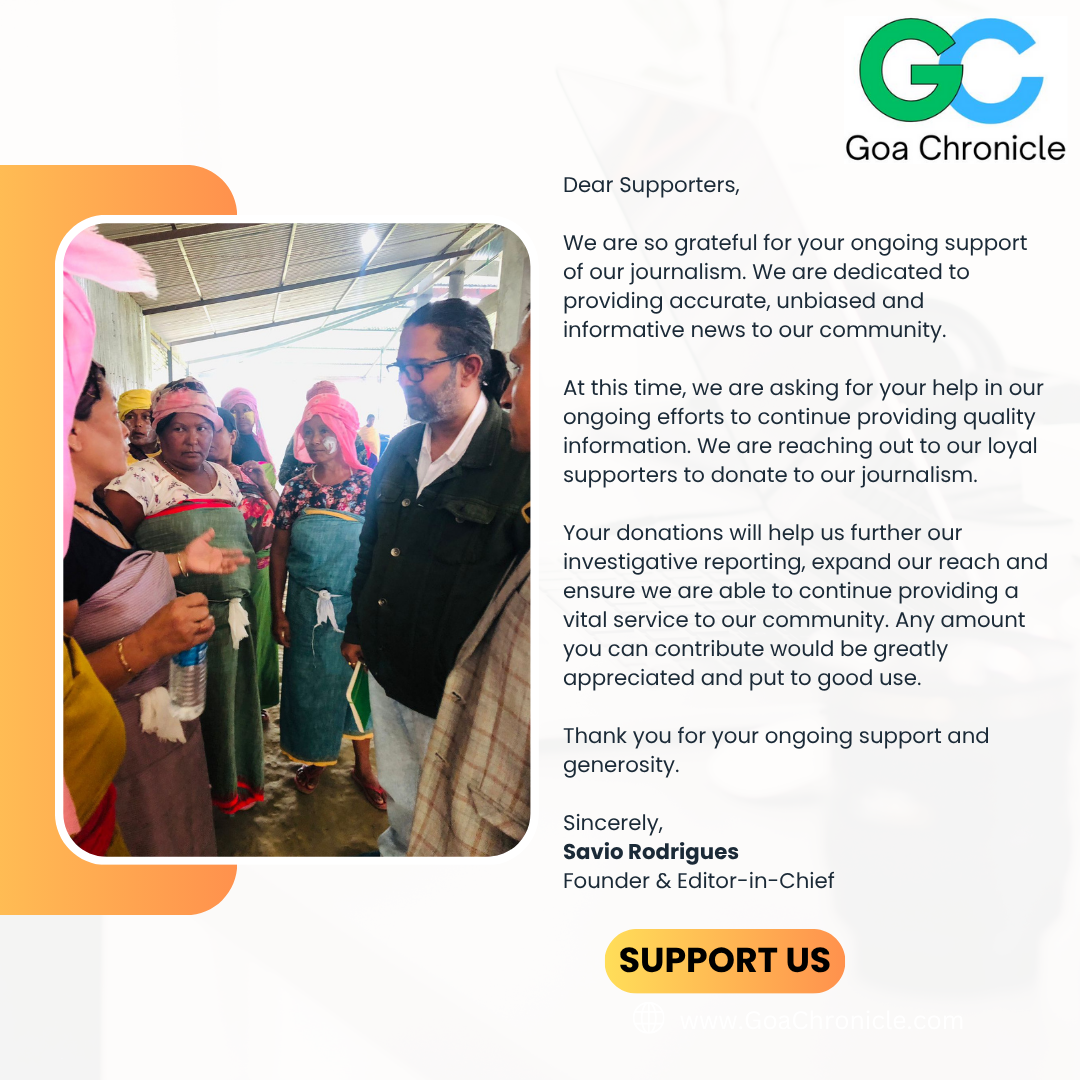Zoramthanga, Chief Minister of Mizoram in an interview with BBC News earlier this week stated: The people of Mizoram are all Christians. When the people of Manipur (Meities) burned hundreds of churches in Manipur, they (Mizos) were totally against that kind of idea. To have sympathy with the BJP at this time will be a big minus point from my point of view for my party.
He further expressed: It will be better if the Prime Minister comes alone and he shares the platform by himself, and I take the stage separately by myself.
Of course, it is election time and the incumbent Chief Minister Zoramthanga is playing to the galleries of his voter base, who are, as he has rightly assessed the Christian majority population in Mizoram. But to state that the people of Mizoram are all Christians is a fallacy and a deliberate attempt to communalize. The people of Mizoram are not all Christians. Of the total population of people in the state: 7,72,809 are Christians, 70,494 are Buddhists, 31562 are Hindus, 326 are Sikhs, 179 are Jains, about 661 have not stated their religion, and 2443 as others.
Over a lakh people in Mizoram do not belong to the Christian faith. The intent behind the focus on all people of Mizoram being Christians appears to be an attempt to showcase Mizoram as being a Christian state. Mizoram is certainly a Christian-majority state but it is not a state where all the people are Christians.
The second fallacy of the Chief Minister of Mizoram Zoramthanga is to blame the people of Manipur (referring to the Meitei) for burning churches in Manipur. There is no doubt that churches were burned in Manipur by the mob in Meitei-controlled territories but there were also temples and shrines belonging to the Meitei community that were burned in Kuki-controlled territories in Manipur. Having visited Manipur in the heat of the conflict and violence, Kuki militants took at JCB to a temple in Kangpoki. I personally visited that site but was not allowed to take pictures.
During the ongoing conflict, the Working Committee on Protection of Meitei Temples (Under the UKAL) has informed the media that 393 Meitei temples and shrines were destroyed and burnt by Kuki militants. Out of 393 destroyed temples, 44 were Umang Lai Laishang including 3 in Tengnoupal, 11 in Churachandpur, 4 in Kakching, 3 in Imphal East, 10 in Kangpokpi, 6 in Bishnupur and 7 in Imphal West district. 110 Apokpa Laiphams were also destroyed of which 15 were in Tengnoupal, 38 in Churachandpur, 23 in Kakching, 9 in Imphal East, and 3 in Kangpokpi. Moreover, 41 Hingkhol Lai were destroyed in Kakching, 72 in Churachandpur, 20 in Bishnupur, 43 in Tengnoupal, 30 in Imphal East, 4 in Imphal West, and 13 in Kangpokpi, while 16 Hindu temples were destroyed.
Reportedly, according to an account from the Kuki community in Manipur, 357 churches were burned down during the violence that erupted on account of the ethnic conflict between the Meitei and Kuki communities. Out of which reportedly according to the report of Archbishop Dominic Lumion, 249 churches belonged to the Meitei Christians. Interestingly, the Meitei Christian Churches Council told media during the time of the conflict that the ongoing ethnic violence in Manipur is not a case of a dominant community attacking the Christian minority, insisting that the conflict was instead between ‘The people of Manipur and illegal immigrants’.
Zoramthanga so eloquently told BBC News that the people of Manipur (referring to the Meitei) burned down the churches, and because all the people in Mizoram are Christians, he is against the idea of sharing the stage with the Prime Minister of India Narendra Modi but it is interesting to note that the Christians in Manipur belonging to the Meitei community are clearly stating that the conflict is between the people of Manipur and the illegal immigrants. In fact, the ‘Forum for Restoration of Peace in Manipur’ said that the conflict in Manipur was one between ‘indigenous people and non-indigenous people’. Its representative further stated that it is undisputed that the only indigenous communities in Manipur were the Nagas and the Meiteis.
So I am a little perplexed about Zoramthanga’s political reasoning for highlighting Christians in Mizoram and refusing to share a stage with Prime Minister Narendra Modi unless his intent is to appease the Christian community in Mizoram and lay the blame for the conflict in Manipur on the Hindu community and the BJP both at the state and centre because they are seen as a Hindu majority political party. I find it even more perplexing because MNF is a part of the National Democratic Alliance and is in power in Mizoram with the support of the BJP.
The illegal immigrant crisis that the Northeast is facing is a serious national security concern. Since the February 2021 military coup in Myanmar, there has been an influx of undocumented migrants from there. Over 40,000 refugees took shelter in Mizoram, while around 4,000 refugees are said to have entered Manipur. These migrants belong to the Kuki-Chin-Zo ethnic group and share ethnic ties with the communities in Mizoram and Manipur. Of course, Zoramthanga has made his stand amply clear. He recently to a section of the media that his government would not be following the Union Home Ministry’s directive to collect biometric data from refugees. He said, “Collection of biometric and biographic data of Myanmar refugees would amount to discrimination against people who are of our blood and kindred brothers and sisters. Keeping this in mind, it was decided not to undertake this as of now.” More so, he went on to elaborate that the Indian government helped the refugees from the erstwhile East Pakistan and even armed them to attain independence. We don’t arm the refugees from Myanmar but we simply provide them with food and shelter on humanitarian grounds.”
Furthermore, in the interview with BBC, Zormathanga opines that it was the responsibility of the Centre to restore peace in Manipur so that people can go back to their native state. There is no doubt that it is the responsibility of the Centre to restore peace in Manipur so that the people can go back to their native state but which people – the people of Manipur or the illegal immigrants in Manipur some who fled to Mizoram or some of the 40,000 illegal immigrants currently living as refugees in Mizoram. It is important for the Chief Minister of Mizoram to cooperate with the Centre to weed out the native people from the illegal immigrants but sadly Zoramthanga refuses to allow for the collection of biometric and biographic data of Myanmar refugees. And that’s where the game of Zoramthanga gets exposed.
Zoramthanga’s intent is clear, to polarise the Manipur conflict by putting the blame on the Meitei for the Manipur violence and conflict – the majority of whom belong to the Hindu majority. Sadly, he also positions the Prime Minister of India with the same bigoted lens while assuming that the BJP needs the sympathy of MNF. There is no doubt that BJP both at the state and centre made some critical errors in dealing with the Manipur violence and conflict but the constant portrayal that it is a religious conflagration by certain sections of the political class and media favoring the Kuki community is worrisome because it is intended to demonise the Meitei Hindu when the truth is that it is not a religious conflict but a dormant ethnic conflict which was made active by those in the narcotics trade in their quest to occupy land in the hills, fear accentuated by terror groups trained in Myanmar who are funded by China to wage a proxy war with India. Interestingly, Zoramthanga is ignorant of the fact the terror groups have infiltrated both the Meitei and Kuki communities.































